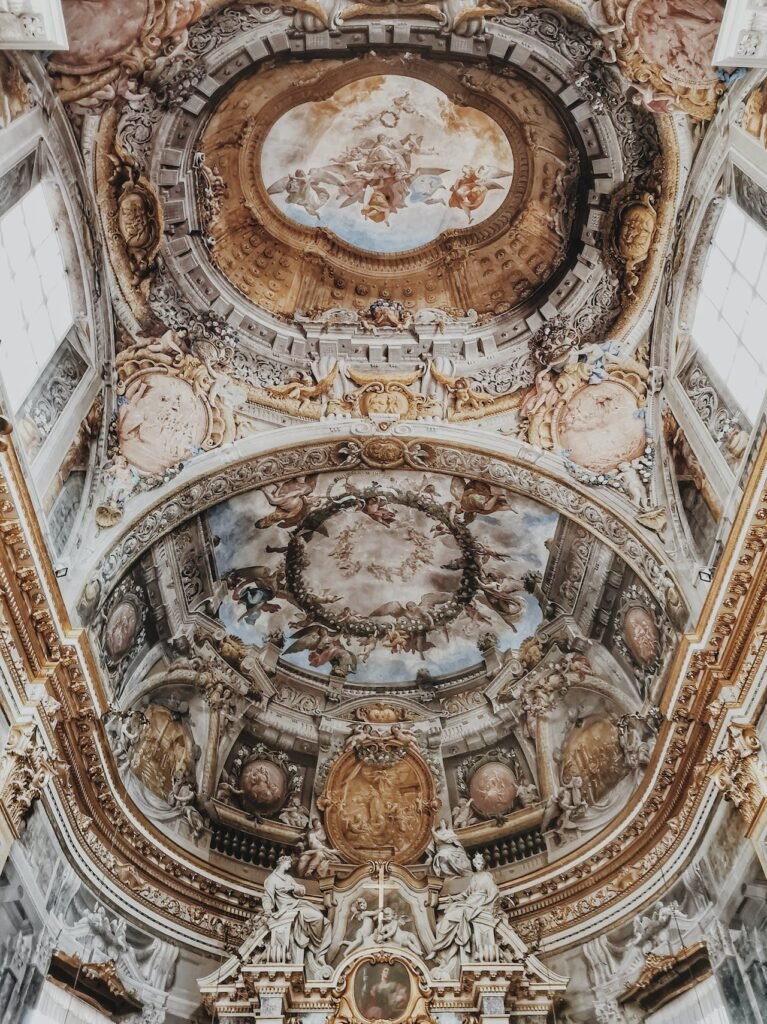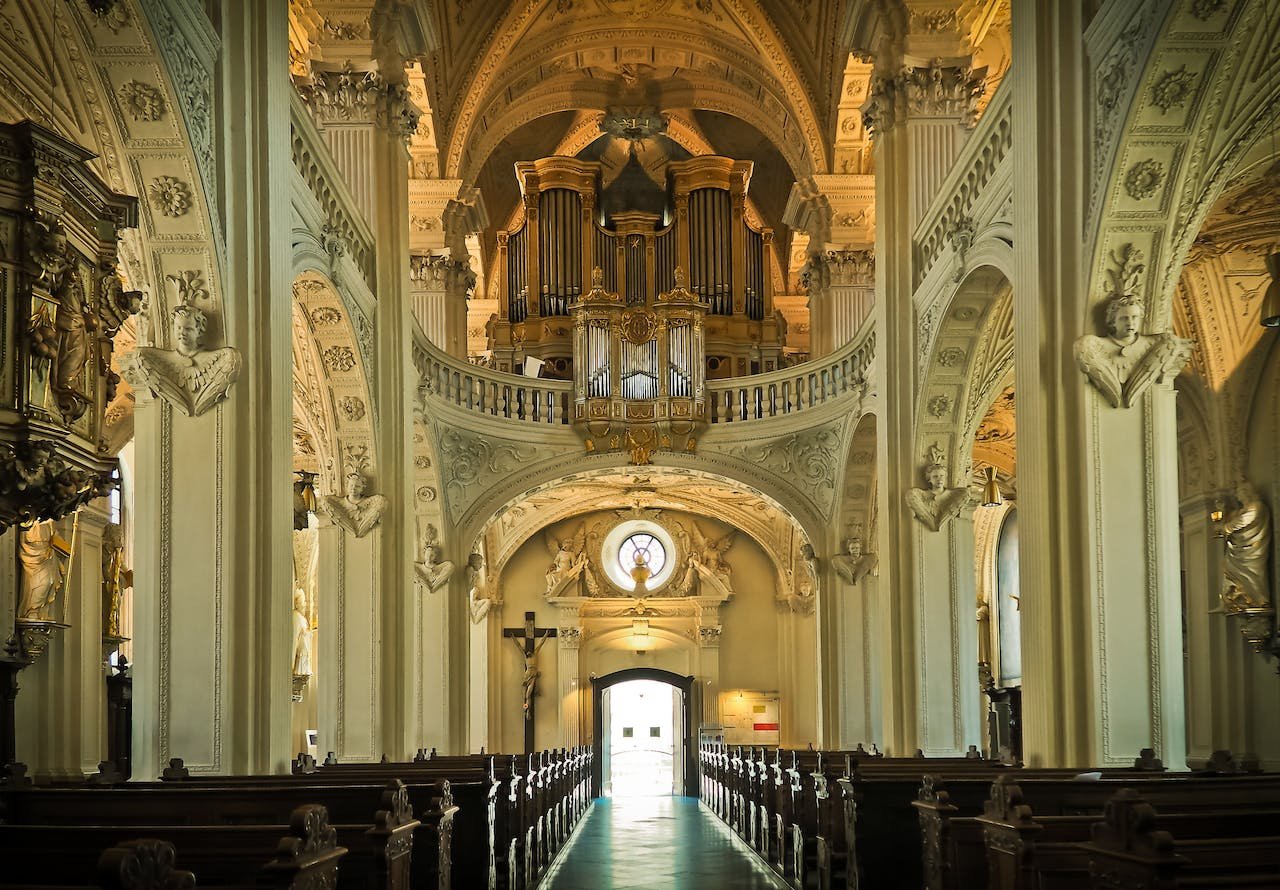Baroque Architecture: The Theatrical Splendor of the Counter-Reformation Era
Baroque architecture, flourishing from the late 16th to the early 18th century, represents a dramatic departure from the restrained order of the Renaissance. Defined by its grandiosity, opulence, and a profound sense of drama, Baroque architecture emerged as a visual manifestation of the Catholic Church’s response to the Protestant Reformation and the broader cultural shifts of the time.
The Context of the Counter-Reformation:
The Baroque style developed against the backdrop of the Counter-Reformation, a period during which the Catholic Church sought to reassert its authority in the face of the Protestant Reformation. Baroque architecture became a powerful tool for conveying the emotional and spiritual intensity of the Catholic faith, aiming to engage the viewer on a visceral level.
Key Features of Baroque Architecture:
- Dramatic and Ornate Detailing:
- Baroque buildings are characterized by their exuberant ornamentation, with intricate details and lavish decorations. Elaborate sculptural elements, including cherubs, angels, and garlands, adorned facades and interiors.
- Curves and Fluidity:
- Unlike the straight lines and symmetrical forms of Renaissance architecture, Baroque design embraced curves and dynamic shapes. Buildings often featured undulating facades, curved walls, and elaborate scrolls.
- Use of Light and Shadow (Chiaroscuro):
- Baroque architects manipulated light and shadow to create a sense of drama. This technique, known as chiaroscuro, emphasized the interplay of light and dark to heighten the emotional impact of the architecture.
- Illusionistic Ceiling Paintings (Trompe-l’oeil):
- Baroque interiors often boasted illusionistic ceiling paintings that created the illusion of three-dimensional space. Artists like Giovanni Battista Tiepolo and Andrea Pozzo excelled in this technique, turning ceilings into dynamic, celestial scenes.

Notable Examples:
- St. Peter’s Basilica (Rome, Italy):
- Gian Lorenzo Bernini, a leading figure of the Baroque era, played a crucial role in the redesign of St. Peter’s Square and the creation of the Baldacchino inside the basilica. The grandeur of the space and the intricate detailing exemplify the Baroque aesthetic.
- Versailles Palace (Versailles, France):
- The Palace of Versailles, with its expansive gardens and opulent interiors, is a quintessential example of French Baroque architecture. Architects such as Jules Hardouin-Mansart and Louis Le Vau contributed to its grandeur.
Theatricality and Emotional Impact:
Baroque architecture sought to evoke powerful emotions and engage the viewer in a theatrical experience. The use of convex and concave forms, coupled with the play of light, created a dynamic and immersive atmosphere. This emphasis on spectacle aimed to inspire a profound emotional response, reinforcing the spiritual messages conveyed by the Catholic Church.
Influence on Urban Planning:
Baroque architecture extended beyond individual buildings to influence urban planning. Grand squares, like the Piazza Navona in Rome, became showcases for Baroque art and architecture. The design of public spaces aimed to create a sense of awe and celebration, reflecting the theatricality inherent in the Baroque style.
The Decline and Legacy:
By the mid-18th century, the Baroque style gradually gave way to the more restrained aesthetics of the Rococo and Neoclassical periods. However, its influence endured. The Baroque emphasis on emotional expression and dynamic forms left an indelible mark on subsequent architectural movements, including the revival of interest in the Baroque during the 19th and 20th centuries.
Conclusion:
Baroque architecture, with its lavish ornamentation, dynamic forms, and theatrical grandeur, stands as a vibrant expression of the cultural and religious fervor of its time. In its pursuit of emotional impact and visual spectacle, Baroque architects created spaces that transcend mere functionality, inviting viewers to experience the sublime. The legacy of Baroque architecture endures in the monumental structures that continue to captivate with their dramatic beauty and the enduring influence of their expressive and dynamic forms.
